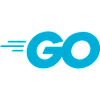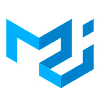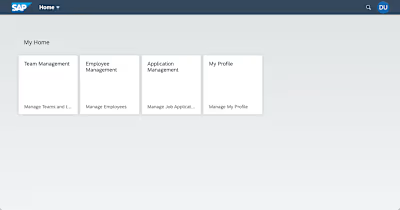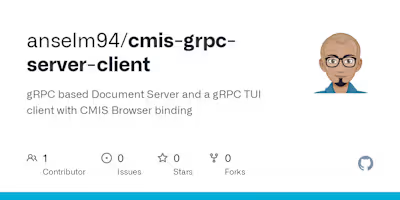anselm94/googlekeepclone
A minimal Clone of Google Keep written in ReactJS with Material UI Components, themed to look exactly like Google Keep, with complex features like sharing, archiving, reminders etc. shoved away. The backend is a GraphQL server written in Golang, with data persisted in SQLite DB file, via GORM. The server implementation is complete with Cookie based Authentication, implemented using Authboss.
Light & Dark Theme
Features
🔐 Login & 🔏 Register for creating a new user
🌈 Colors, 📐 Sizes, ❮❯ Margins, ❯❮ Paddings etc., matches exactly that of Google Keep's Web App
📲 Responsive Design - Adapts all screen sizes from mobile screens up to 4k displays
🌚 Dark Mode - Dynamically change light/dark theme
📝 Notes - Create, Update, Copy, Delete items on the fly. Dynamically change between these 2 modes
🚥 Colors - Assign colors to Notes & adapts to dark/light theme
📜 Display Mode - Notes can appear in the canvas in 2 different modes
🏷 Labels - Label your notes, assign/unassign labels dynamically and filter notes by selecting labels in Sidebar
🔗 Subscriptions - When notes are created/deleted in different browser tabs, the updates are pushed from server to client
Toggling themes, adding notes and assigning color and label. Later marking it as complete
Libraries Used
Frontend
ReactJS - See
Web sourceMaterialUI - See
Login.jsMaterialUI Icons - See
AppBar.js Reach Router - See
App.js Axios - React Hooks - See
Login.js Backend
Gorilla Mux - See
main.go#main()GORM - See
models_gen.gogqlgen - See
resolver.goDeployment
Design
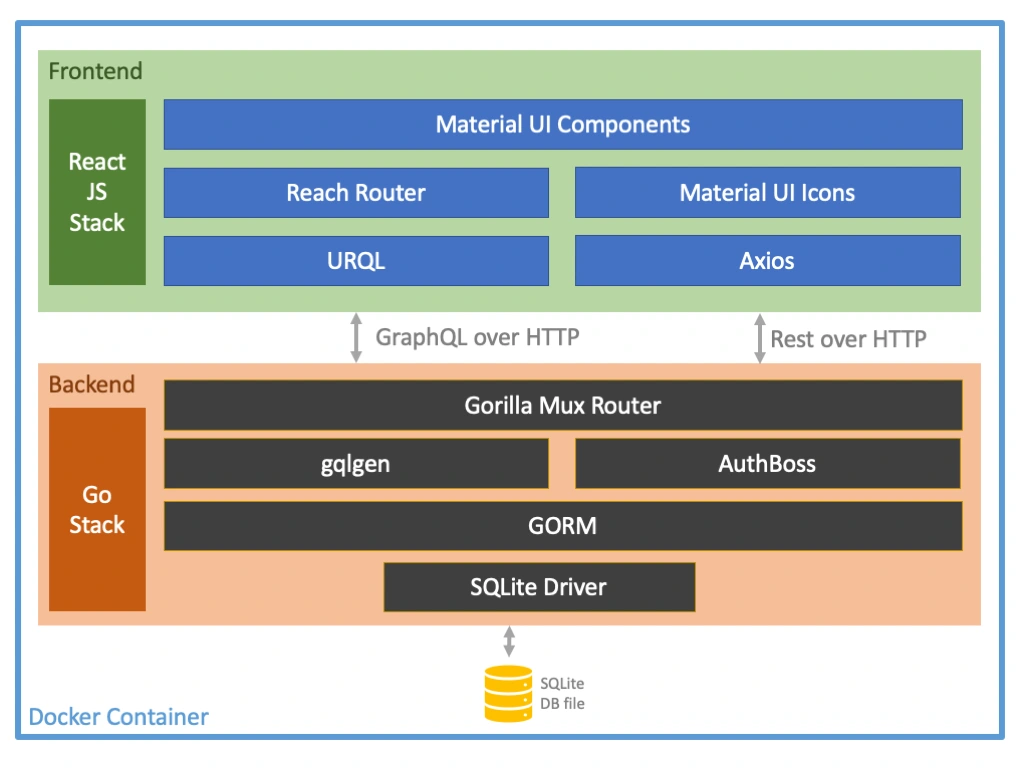
This diagram explains the high-level architecture design of this project. This stack is a Monolith, with frontend-backend-database all packed into one single container deployment. Frontend is a ReactJS stack.
The Frontend is built with ReactJS using Material UI React components. The state management is through React's Hooks for State, Context & Reducer (see
store.js). The main application is available at root /, which on load tries to load the noteitems.Since the user will not authenticated by this time, the Router navigates the user to
/login where the user can enter email & password to login. To register for a new user, the user clicks on the 'Register' link to navigate to /register route. The user may enter any name, email (no email verification in place) and password. All Login & Registration HTTP calls are REST and are made via Axios React Hooks API.Once logged in, a session cookie will be set in the browser. Now, the GraphQL API is available at
/query and URQL client loads all the Notes, Labels & User information, in a single query (However, has to be optimised, as URQL's caching mechanism, makes involuntary calls, whenever any of the mutation happens). UI displays the items. User may create, update, delete note items, and may also create & assign/unassign labels to note items. The labels may be added, but update/delete hasn't be implemented now. User can sign out, by clicking the 'Profile' icon and then 'Sign Out' button.The Backend is built with Golang and no server framework is used, except Gorilla Mux, which provides utils for routing. The router consists for 3 major routes:
/ - handles UI resources/query - handles GraphQL requests and will be delegated to gqlgen generated GraphQL handlers. Throws NotAuthenticated error, if user is unauthenticated. Also, understands user information, via session cookie./auth - handles all authentication related requests and will be delegated to AuthBoss framework. The /auth/register, /auth/login & /auth/logout routes handle Registration, Login & Logout respectively.The DB is a SQLite DB and the persistence is a
file based API. GORM allows quick and easy Database modelling. The database tables are generated as per the modelling defined as Go Structs (see models_gen.go). The database modelling is done as per this ER Diagram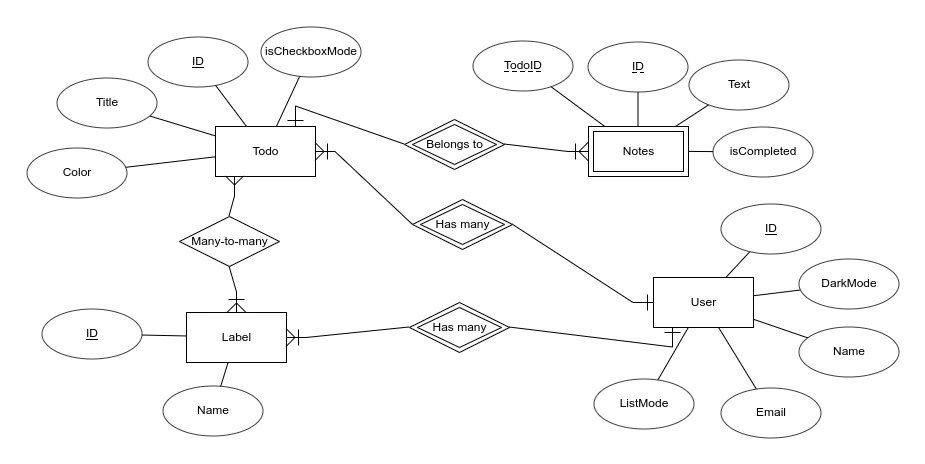
Both gqlgen & AuthBoss has resolvers. gqlgen's resolvers (see
resolver.go) helps in resolving Notes related data from database. While AuthBoss's resolvers (see storer.go) help in resolving user related information.The Deployment is through a muti-stage Docker build, which facilitates building Go binary and ReactJS artifacts in one single command. The Docker image generated is a Monolith, which can be deployed & run, without any other external setup.
Like this project
Posted Mar 4, 2024
A clone of Google Keep with its original Material Design aesthetics - anselm94/googlekeepclone
Likes
0
Views
2

